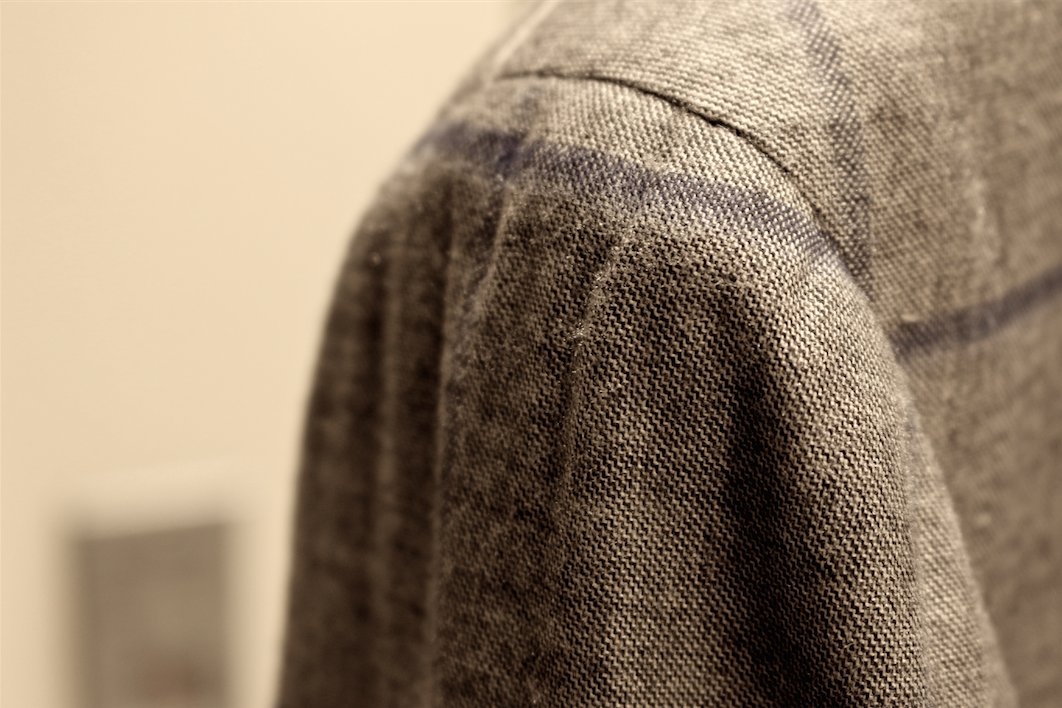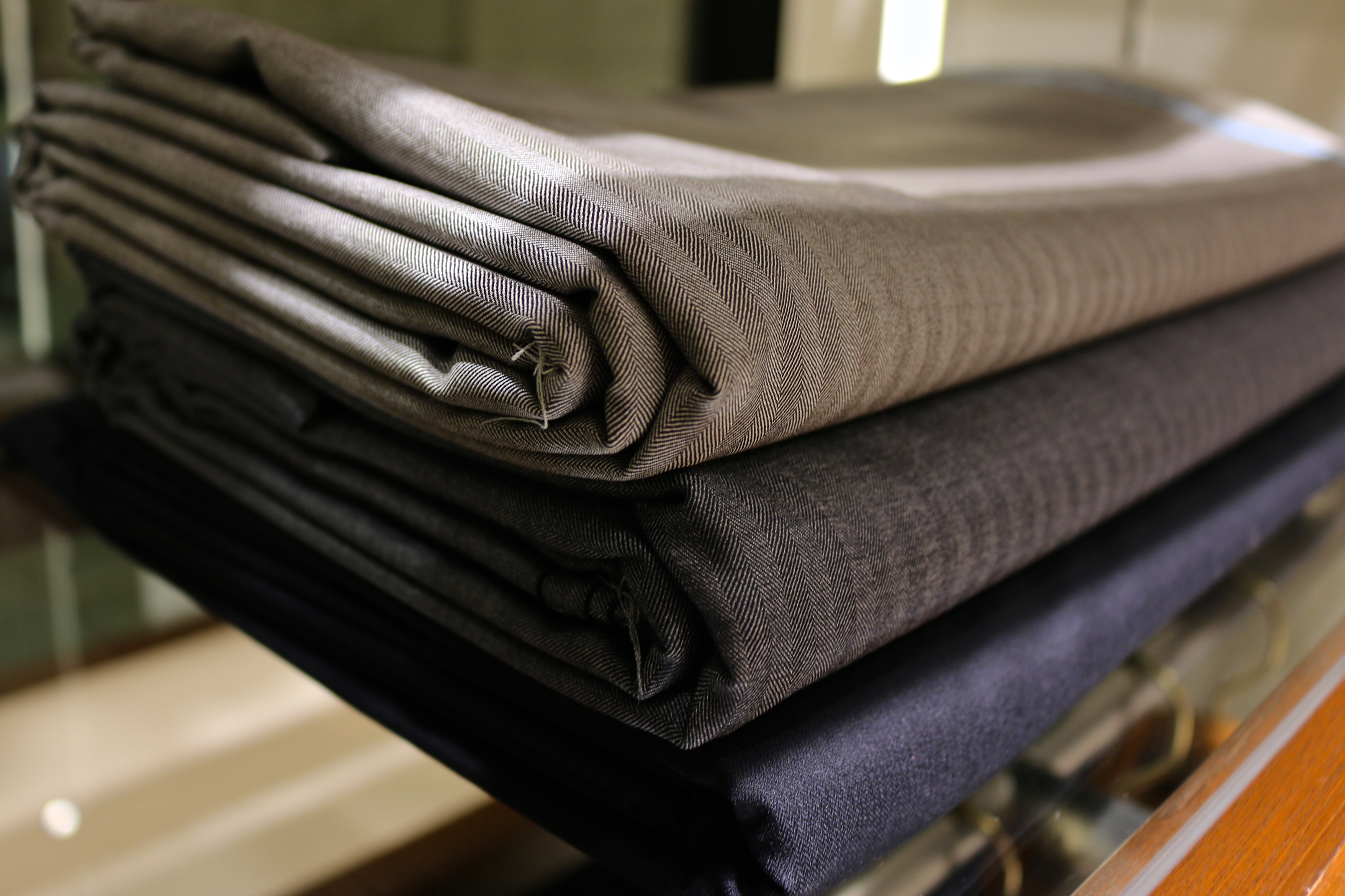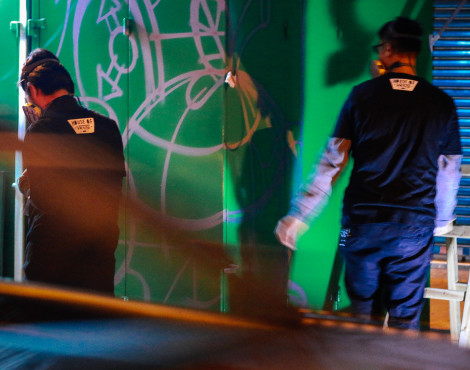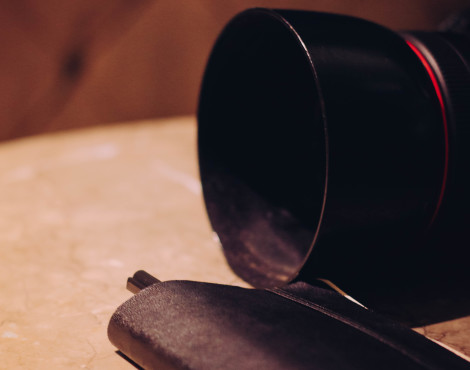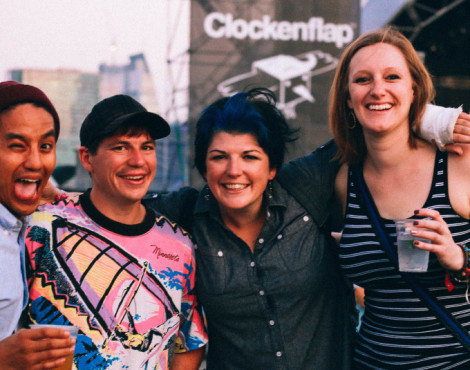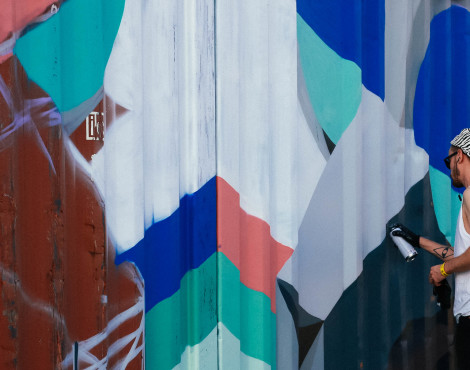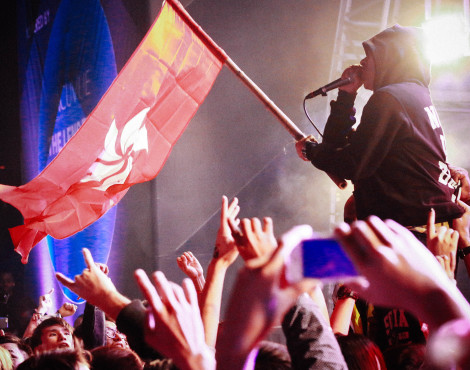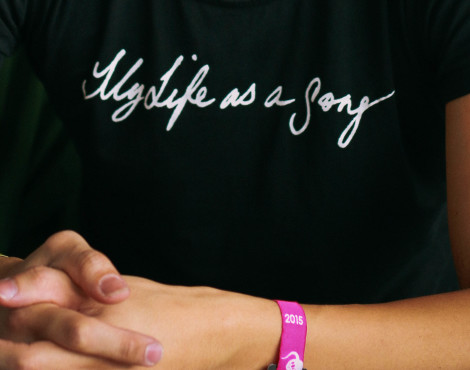 On my last day in Tokyo, I momentarily caught myself in the tourist shuffle: wandering into an alley, then another, searching for any hint of address, doubling back, pacing in square circles, swearing that the café we researched had to be right around here. I took a moment at the buzzing Harajuku intersection to grasp any sense of direction. Waiting at the crosswalk, I saw no less than:
On my last day in Tokyo, I momentarily caught myself in the tourist shuffle: wandering into an alley, then another, searching for any hint of address, doubling back, pacing in square circles, swearing that the café we researched had to be right around here. I took a moment at the buzzing Harajuku intersection to grasp any sense of direction. Waiting at the crosswalk, I saw no less than:
- One pastel woman in Doc Marten boots and a Victorian wig
- Two of four perfectly chromed hubs bouncing to the hydraulic initiations of a lowrider impala
- A corner shop dedicated to a rainbow of prophylactics, appropriately called Condomania
I bet everyone has caught their own version of this scene in Japan, a self-contained ecosystem of idiosyncratic flairs. The Galápagos of style.
In the metro, the cavalier mode above contrasts with everyday businessmen, commuting in hues as muted as the subway cars that transport them. Gray, navy, black. Crisp, polished, deft. It was as if the underground spreads of Brooks Brothers surfaced into bubbles of cosplay. Except here, there’s no sign of caricature or false characterizations.
For whatever reason – be it the lifelong reverence to improving upon one’s craft, or the flawless execution of foreign signatures, at-times to the point of succeeding its progenitor – Japan has always been able to embody an assortment of styles on any given day with breathless ownership.
And I think that’s what’s kept Ring Jacket relevant through its sixty-one years.
A Brief History
As my Tuesday rush hour commute made clear, Japanese gentlemen either understand impeccable, timeless color, texture, and silhouette, or their only available clothiers do. It is upon this simple concept that Ring Jacket’s patriarch founded the clothing line.
In 1954, Jhoichi Fukushima, understanding that the elegance and precision of a suit was only offered via custom makings, sought to achieve the same in a ready-to-wear line, at which time suffered the assumption of inferiority to its big bespoke brother. Thus the study of the suit began.
Three years later, Fukushima-san’s Ring Jacket factory opened in Osaka with a team of master tailors, allowing full creative and executive control over his garments. An admirer of the Ivy League, Fukushima based Ring Jacket’s aesthetic in American and English designs. This was preserved and expanded as the Japanese palette shifted.
Through the sixties and seventies, gents embraced Ready-to-wear and English/American stylings. They discovered Fukushima’s brand as the superior, finishing every piece with machine and handmade details. The Eighties shifted towards Italian flavor, and Ring Jacket adjusted accordingly, sending apprentices not just to Savile Row, but Naples as well. Soon the best of every leading suit style wove into every Ring Jacket.
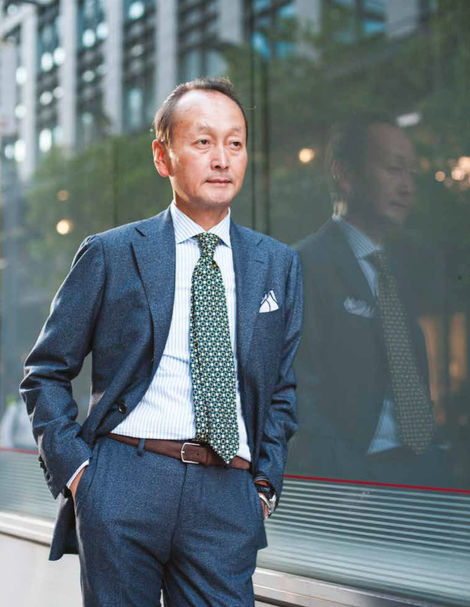
1995 saw Kunichi Fukushima carrying the vision of his father’s custom-quality, off-the-rack clothing, and since then, Ring Jacket has enjoyed a worldwide explosion. Today one can try on their Japanese-made suits or Italian-made shirts in stores across Japan, Hong Kong, San Francisco, and New York, to name a few. A team also travels the world to offer made-to-order and made-to measure garments.
The Ring Jacket story is one of ambitions realized and traditions preserved.
The Aoyama Flagship
Stepping through the glass doors of Tokyo’s flagship Aoyama store, one thing becomes clear: Ring Jacket’s adherence to expert craftsmanship is as perceivable as their adaptability to Tokyo’s eclectic charm.
A Craft of Custom Quality
The eastern wall of garments lines a collection of uniform wares to complete the standard wardrobe: navy, charcoal, pinstripe, a few double-breasted models for more rakish boardroom meetings. The construction of their basic suits, as well as MEISTER models (premium suits with more handmade details and finishes) all reveal precision far above the usual expectation for ready-to-wear. How is this possible?
Simplicity is key. If you master the right details, the rest will fall into place accordingly. For Ring Jacket, this begins and ends with “Koroshi Eri.”
Any well-fitting suit begins and reveals its mettle at the neck to shoulder line. Why? Take a look at your buddies for a moment. From the bottom of their neck to the edge of their shoulder, notice the near-snowflake array of variation in slope, bulge, length, shape, and more. Any miscalculation can turn a smooth neck-to-shoulder- slope into an avalanche of bumps and breaks. Koroshi Eri is the technique in custom clothing to truly suit the customer’s neck-to-shoulder line. It is by their tailors’ dedication of applying this technique in ready-to-wear garments that Ring Jacket has solidified their place atop this market of suits.
Suiting All Flavors
 There were plenty of suits and patterns notched into my memory, none more so than a rack of odd jackets from their current spring/summer collection:
There were plenty of suits and patterns notched into my memory, none more so than a rack of odd jackets from their current spring/summer collection:
The fabrics of these three pieces were produced in the famed Italian mill Carlo Barbera, whose signature bears the patches of Ring Jacket-exclusive cloths:
These jackets serve as an introduction to anyone seeking dandier modes of dress, as the Aoyama flagship reveals pieces that can fit in the closet of anyone in the style spectrum.
There are, of course, the traditional suit cloths and cuts for the uninitiated,
wider lapels and trimmer silhouettes for the more demonstrative élan,
my favorite: the fuller, packable Creamy Waffle for the frequent flyers, rough & tumblers, and in my case, chalkboard chieftains,
and then, well . . . those who can pull off this:

“I didn’t know that Ring Jacket was offering women’s clothes,” I remarked. But this, as store manager Keiju Tsuda explained, is a men’s coat made of women’s garment fabric.
“I couldn’t wear this in the subway. Everyone would stare at me,” Keiju admitted.
He spoke for the both of us. Visions of Kramer in his technicolor pimp coat buzz through my head. Who then, would dare?


- Photo Credit: Hidetoshi Sasamoto
Officially, Hideyoshi Sasamoto is Ring Jacket’s Director of Sales. Daily, he is a maverick of layered patterns and unconventional cloths.

Between employing women’s fabrics and twisting every tradition , Sasamoto-san embodies the fashionably adventurous spirit of Nippon. And like those I saw on the busy Harajuku crosswalk, he owns his style without pretense or apprehension. You can, in fact, be different, even very different. You just have to make it yours.
This is how Ring Jacket has maintained relevance in Japan for sixty years, and why it has enjoyed its international expansion in the last five. Fukushima-san’s goal of bespoke quality in ready-made clothes laid the foundation for seeking the best in every tailoring house and style culture, resulting in a spectrum of suits, coats, trousers, and accessories that could belong in anyone’s closet, sober to surreal, then provide the means to try the other’s taste for a change.
Keiju shared one more perspective about the house of Ring Jacket.
“We believe that one cannot claim ‘flavored clothing’ without skill and sense. To achieve this goal, we dare to take time and strive to pursue the highest-quality craft clothing.
“For clothing-loving people.”
More Photos:





Ring Jacket: Since 1954
Ring People
A Brief History
火曜日の通勤ラッシュ時に、日本の紳士たちは何が完璧なのかということや、時代に流されない色、生地、シルエットを理解しているということを明確にしてくれました。それはリングヂャケットの創業者が洋服の型を設立したシンプルなコンセプトに基づいています。
1954年、福島乗一氏はスーツのエレガンスと素質はオーダーメイドのみでしか表現出来ないと知り、既製服でも同じことをしようと試みましたが、それによって生じる不具合に悩むことになりました。こうして、福島氏の紳士服への研究が始まったのです。
3年後、最高の仕立て人達と共にリングヂャケットの工場が大阪で開業し、福島氏の作る衣服は独創的であり機能性もありました。アイビーリーグを愛し て止まない福島氏は、リングヂャケットの美学を、アメリカとイギリスのデザインに基盤として用いりました。この考え方は維持され、広まっていき、日本人の それまでの洋服に対する考え方は入れ替わりました。
70年代と80年代を通して、男性は既製服ではブリティッシュ、もしくはアメリカンスタイルを用いるようになり、それがメジャーな流れでしたが、 80年代に入るとリングヂャケットは現在でこそその物作りに注目が集まるイタリアでの物作りに注目をします。スーツの仕立て職人たちをサヴィルロウではな く、イタリアの有力なファクトリーへと送り出すことで、手作業を多く用いた良質なスーツスタイルがリングヂャケットから生み出される様になります。
1995年、福島薫一氏は父の既製服の仕立ての品質を引き継ぎ、それをきっかけに物作りへの拘りと具現化は加速していきます。今日では、誰でも全国 の店舗でリングヂャケットの日本製のスーツや、オリジナル企画のイタリア製のシャツを試すことができ、香港やサンフランシスコ、ニューヨークでもその一部 を試して頂けます。また彼らは、オーダーメイドや、注文服を提供するために世界中を駆け巡っています。
リングヂャケットの物語は野心の現実化と伝統の維持でもあります。
The Aoyama Flagship
東京の青山本店の前を通った際、ひとつのことが明らかになりました。リングヂャケットの熟練した職人技は、東京の折衷的な魅力に適応性があるということが分かります。
A Craft Custom Quality
お店の東側の壁にある衣服の列は全面的にスタンダードなワードローブとなっていました。ネイビー、チャコール、ピンストライプ、2,3着のダブルブ レステッド。最も手縫いの工程が多い最上級の仕上げであるマイスターラインはもちろんのこと、リングヂャケットの洋服の基本的な構成は、普段の我々の既製 服に対する期待をはるかに上回ることが明らかです。どのようにしてこのようなことが可能になるのでしょうか?
それは単純なことが鍵となります。正しい物作りを習得することが出来れば、あとはそれに応じて分類されます。リングヂャケットの場合、「殺し衿」から始まり、「殺し衿」で終わります。
いくつもの良い着心地のスーツは、首から肩にかけてのラインの質が明らかにします。なぜか?あなたの友人の体つきをしばらく見てみて下さい。首元か ら肩にかけてじりじりと斜めに下り、雪の結晶が斜面によってその形を変えるような感覚に近く、膨らみがあり、長さがあり、形があり、様々です。ある程度の 誤算は首から肩にかけての斜面によってスムーズになります。殺し衿は仕立服の技術であり、人の首から肩のラインに本当に適しています。それはリングヂャ ケットの仕立人達が殺し衿の技術を既製品に反映させた贈り物であり、リングヂャケットをスーツ市場の頂点へと位置付けました。
Suiting All Flavors
リングヂャケットの春夏コレクションの少し変わったジャケットの場合は特に、たくさんのスーツとそのパターンが私にとってはとても印象的でした。
下の3枚の生地はイタリアの名門であるカルロバルベラで生産され、袖のタグのサインは現代表の直筆サインを入れたリングヂャケットだけの特別な物と聞きました。
これらのジャケットはドレススタイルにダンディズムを追い求めている人にとっては最適であり、青山本店は、誰のクローゼットにもこれらのジャケットは合うことを明らかにしています。
これらのものは、もちろんどなたでも着て頂きやすい伝統的なスーツの生地と仕立てとなっています。
広いラペル幅と仕立ての行き届いたシルエットは、よりリングジャケットの魂を表現的にしています。
私のお気に入り、フーラ、コンパクトに収納できるクリーミーワッフル、ラフ&タンブラーズ、そしてチョークボードチーフタンズ、
そしてこれを見事に着こなすことが出来る人。
「リングヂャケットが婦人服を扱っているなんで知らなかったよ!」と、私は言いました。しかし、この件に関して、青山店の津田さんは、「昨今男性用のコートは、女性用として用いられることが多かった生地を使用することがトレンドなのです!」と教えてくれました。
笹本さんはリングヂャケットのセールスディレクターです。彼は、積み重ねられた洋裁の型紙と、型破りな洋服に関しては異端児でもあります。
独特な生地を用い、伝統的な衣服を作り上げることで、笹本さんは日本の流行を追うことの冒険心を体現しています。私が人の多い原宿の交差点で見た人 たちのように、彼は周りの目などを気にせずに彼自身のスタイルをしっかりと持っています。あなたの着こなし方を自分自身のものにしてしまえば、たとえそれ が大きな間違いであったとしても、あなたも他の人とは違いを出せるのです。
これがリングヂャケットが60年間日本での適正さを保ち続けてきたことで、ここ5年間で国際的に彼らの服が広まっているということでもあります。既 製服でビスポークの品質を誇る商品を作り出すという福島氏の目標は、仕立服屋とスタイルの確立を図り、最高のものを追及することであり、スーツ、コート、 パンツ、アクセサリーなどが結果として誰のクローゼットの中にあり、地味なものからシュールなものへと、そして変化のために違うテイストを試すことを提供 することです。
津田さんはもう一つ、リングヂャケットの考えを教えてくれました。
「私達は、技術とセンスなしに‘味のある服’を、自信を持って勧めることは出来ないと思っています。この目標を達成するには時間はかかるし最高品質のものを追い求める努力はしなければならないです。洋服を愛する人たちのために

